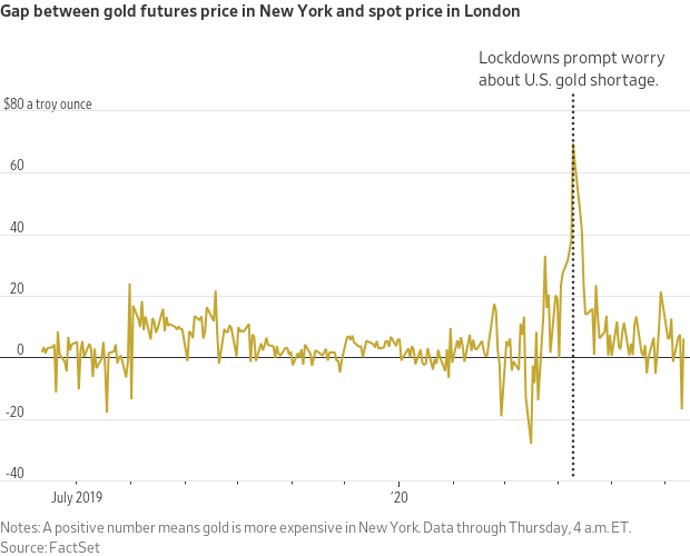A Scramble For Gold Redraws The Market's Map
THANK YOU FOR POSTING A REVIEW!
Your review was sent successfully and is now waiting for our staff to publish it.

(June 11, 2020 - Joe Wallace and Anna Isaac)

New York faces a gold rush after the pandemic threw precious-metal markets into disarray, setting off a scramble by traders to cut their losses.
Bullion vaults approved by the Comex division of the New York Mercantile Exchange house a record 29.7 million troy ounces, according to FactSet data going back to 2013. Almost three quarters of that gold—weighing as much as nine, fully loaded Boeing 737-700 airplanes—has arrived in the past three months.
The displacement was set off by dysfunction in the market in March and early April, caused by fears of a breakdown in ordinarily frictionless gold supply chains. It has reversed the normal flow of bullion from west to east, redrawing the map of the international gold market.
Conventional gold routes could take months to resume because demand has been crimped in two major buyers of bullion, China and India.
“Gold has reached America from all over the world,” said Allan Finn, commodities director at Malca-Amit, a company that transports gold securely. “The flows into New York are unprecedented.”
Logistics firms such as Malca-Amit are working around the clock to keep up, sometimes opting to charter private planes to transport bullion. Making their job more difficult, few commercial airplanes—the preferred vehicle for moving gold—have been flying in recent months. At the height of the outbreak in New York, planes that did take to the sky often favored carrying medical equipment, rather than bullion, in their holds.
The scramble to get gold to New York stemmed in part from the demand among U.S. investors for the precious metal, seen as a safe store of wealth by many. Gold prices have climbed almost 15% this year, and rose 1.3% Thursday to $1,745.30 a troy ounce.
The influx gained traction after the pandemic made the global gold market seize up in late March.
Investors, banks and miners use New York’s Comex to buy and sell gold futures, while the U.K. is the main venue for purchasing physical bullion. Prices in the two markets are normally within a few dollars per troy ounce of each other. Traders know that banks can fly gold from Europe to New York to deliver against Comex futures if prices were to diverge, bringing them back together.
Restrictions on movement threatened to stop this self-correcting mechanism, driving the premium for New York gold up to $70 an ounce in early April. The widening caused losses at banks that dominate the gold market, typically owning physical bars in the U.K. and hedging them by selling futures on the Comex.
-
Silver Remains On The Defensive Below $27.50 On Easing Middle East Tensions By
Mint State Gold
April 24 2024






